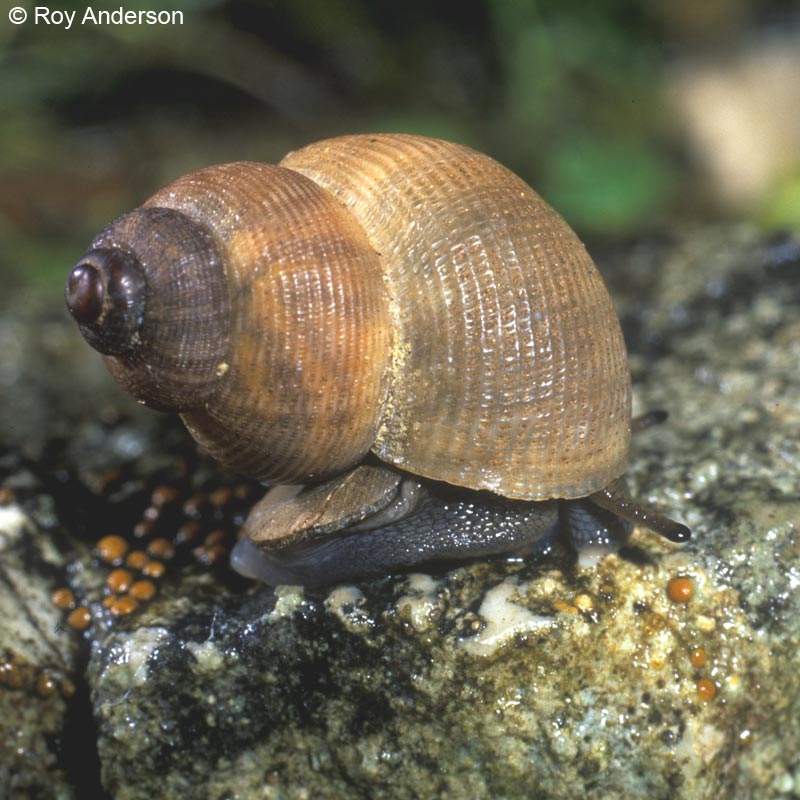| Mollusca : Gastropoda : Littorinimorpha : Pomatiidae | Snails and slugs |
Pomatias elegans (O. F. Müller, 1774)
Round-mouthed snail or land winkle
 |
| Pomatias elegans |
Description: A medium-sized, pinkish to reddish-brown shell with darker apex. Very solid with a strong sculpture of spiral striae crossed by broad radial grooves. Aperture closed by a thick, horny operculum. 11-15 mm.
World Distribution: A southern species in Europe ranging from southern Denmark to the Mediterranean but strangely lacking in Iberia apart from outlying colonies on the coast of Portugal and the Balearic islands. Distribution type: European Southern-temperate (83).
Irish Distribution: In the nineteenth century there were a small number of artificial introductions of this species to Ireland which evidently did not take. However, Thompson (1842) regarded the finding of 'fully a hundred' shells washed ashore at 'Mullaghmore' near Bundoran, East Donegal, as reliable evidence that the species was indeed indigenous. In 1976, a small colony of live animals along with subfossil shells was located near New Quay on Finavarra on the north coast of Co. Clare (Platts, 1977). The species is now regarded as a long-established but relict native in Ireland. The nineteenth-century occurrence of shells at Bundoran, roughly 100km north of New Quay, has never been satisfactorily explained. However, Cawley (1996) refers to a dead shell recently found by Dr D.C.F. Cotton in Bunduff Dunes, Co Sligo, which is close to the probable Mullaghmore site referred to by Thompson. No living shells have ever been found in this area.
Ecology:
- Confined to highly calcareous soils
- Thermophilic (requires heat) but probably restricted more by low summer soil temperatures than by winter frosts
- In Ireland lives in gryke fissures on limestone pavement close to the sea
- Outside Ireland it burrows in dry, limy soils
Key Identification Features:
- Shell medium-sized, broadly conical, solid
- Surface with a sculpture of strong spiral grooves crossed by finer radial lines
- Aperture closed by a horny operculum which has a complex system of radial grooves
- Animal dark with a separate, long, nose and tentacles with eyes at the base, not at the apex
Red list status:
- Critically endangered (CR).
Distribution Map from NBN: Pomatias elegans at National Biodiversity Network mapping facility, data for UK.
iNaturalist: Pomatias elegans at iNaturalist World Species Observations database.
GBIF data for Pomatias elegans | Classification: Gastropoda, Littorinimorpha, Pomatiidae, Pomatias
Thumbnails for genus Pomatias
| Anderson, R., 2025. Pomatias elegans. (O. F. Müller, 1774). [In] MolluscIreland. https://www2.habitas.org.uk/molluscireland/species.php?item=145. Accessed on 2025-04-02. |